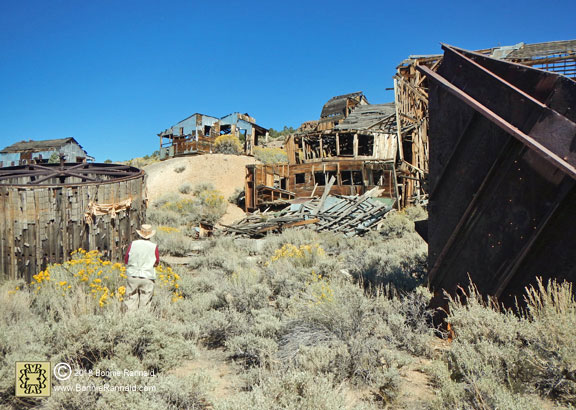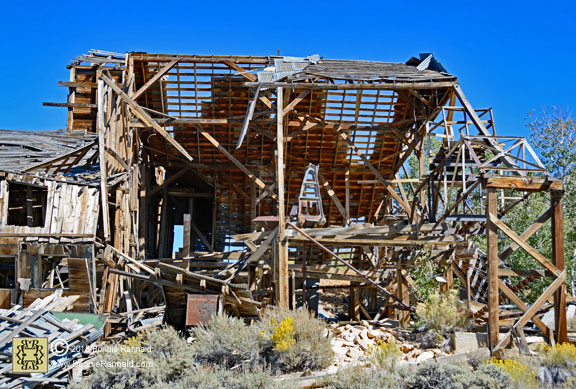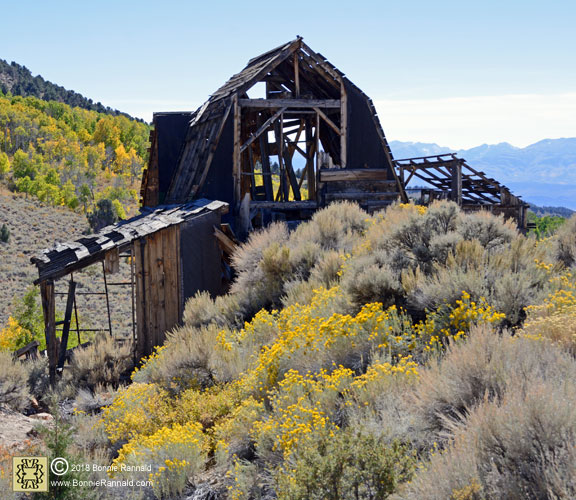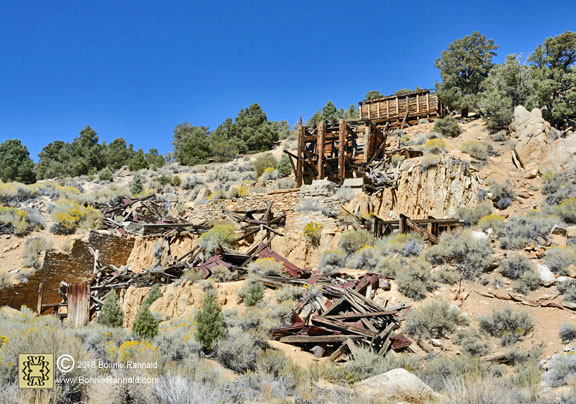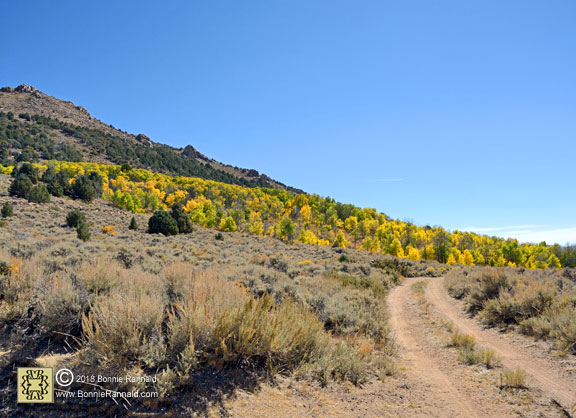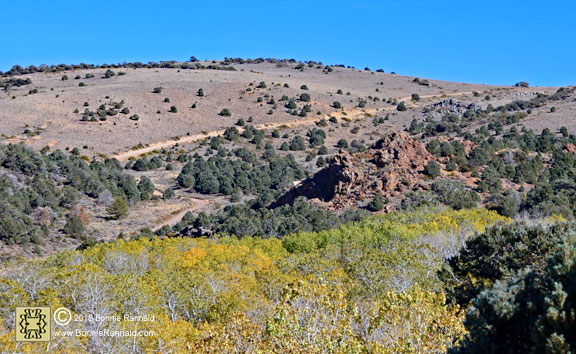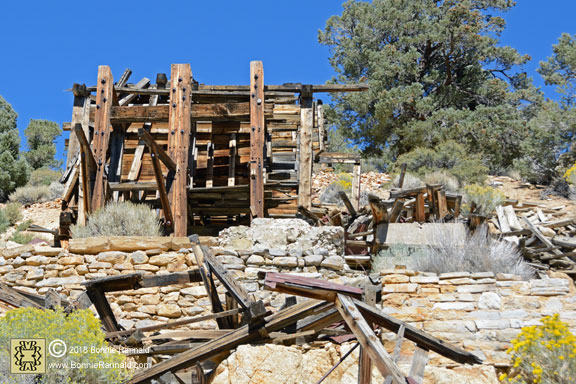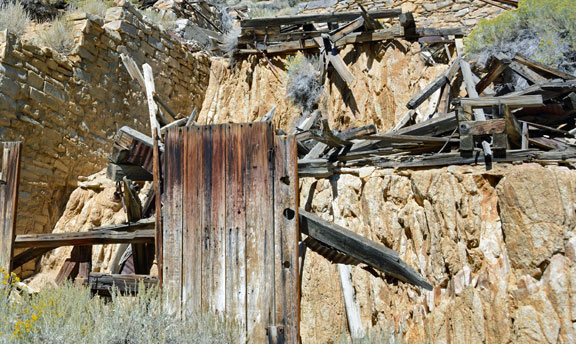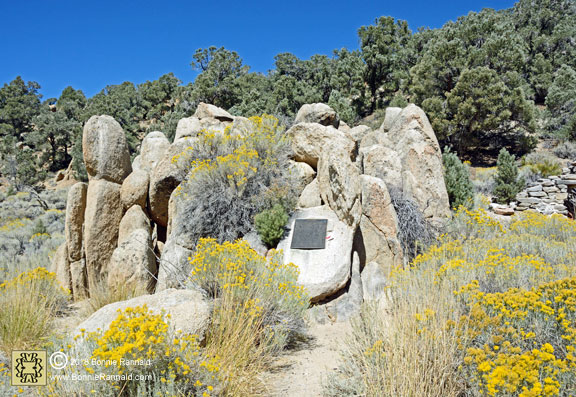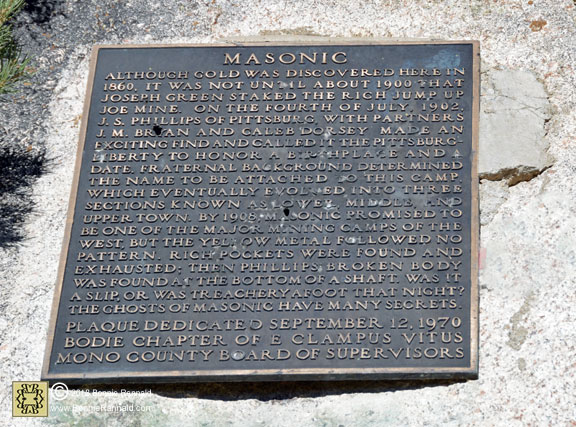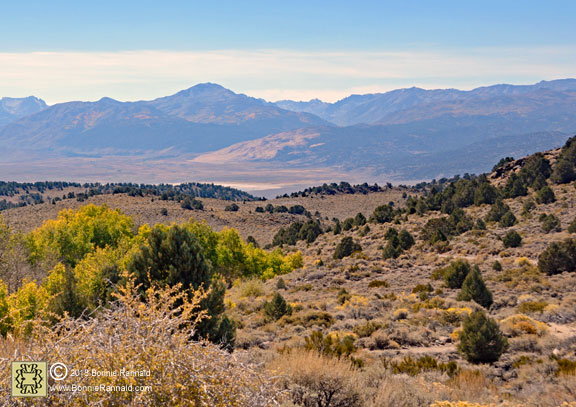Abandoned but not forgotten, and maybe even haunted!
My first impression when I drove up to the Chemung Mill and Mine, was I at the right place or was this a huge barn? There were no markers or information posts. Checking the GPS and it did indicate that I had arrived at Chemung.
The Chemung Mine was established around 1909 by Steve Kavanaugh when he was hired to dig for a gold vein. It was named after his hometown in Illinois.
Weathered structures of buildings with interesting shapes stood tall against the rugged terrain.
Following a trail back toward the south entrance, a panoramic view of most of the buildings came into sight.
The Chemung Mine was torn down and rebuilt 3 times.
Today, most of the buildings are the state of ill repair, due either to the harsh desert elements or acts of vandalism.
A large drum next to the road was showing the weathering from a harsh life in the high desert.
My caution of the dangers in abandoned buildings was overcome by my curiosity to see what lies within. An electrical wire still dangles from the side of a structure; I’ve got to get a closer view.
At the opening and overhead, I see massive beams supporting huge metal wheels. To the right is a cement tank and a white powdery substance covers most of the floor.
Hoping there are no earthquakes in the area, I continue walking further inside.
I have since learned that the white powder could be a form of lime used for altering pH during gold extraction. However, I did keep a safe distance since I know that cyanide was also used in the mining of gold.
The afternoon breeze caused the tin siding on an adjacent building to rattle; I was getting an eerie feeling. Time to get back in the open!
The Chemung Mine had at one time been a good producer of gold, however, the operation was constantly plagued by legal issues.
As I stood at the back entrance to the mill with an open mine shaft to the right, I was thinking of going inside for a closer look. However, for some reason, I turned and walked back down the rocky trail. Now I wonder if the mine is haunted and did my instinct keep me from danger? There is a rumor that Kavanaugh, the mine’s founder was thrown into a mine shaft for cheating his employees.
The day was growing long and it was time to make my departure. I do hope to return again for more photo-exploring and maybe get a winter view of the Chemung Mine and Mill.
What an exciting and interesting photo-adventure this day has been. I love it when I am drawn to an area and not knowing what to expect I get treated to new experiences.
Sign up and follow my blog to see where my next photo-adventure will be!
Photography places me in the moment where I can share that moment in time. It becomes a life story as represented by my interaction with the scene. The happiness and beauty or the sorrow and strife; how I focus leaves a lasting impression that might touch the viewer on a spiritual level.
"Reflecting Nature's Artistry"
No images on this blog are within Public Domain or are available for free download.
All rights reserved, world-wide and images protected by Digital Millennium Copyright Act (DMCA). All photography, graphics, text, design, and content is copyrighted by Bonnie Rannald and should not be copied, down-loaded, transferred and re-created in any way without the express consent, in writing to Bonnie Rannald. For information on Bonnie Rannald licensed, right-managed images, please submit a written request.



